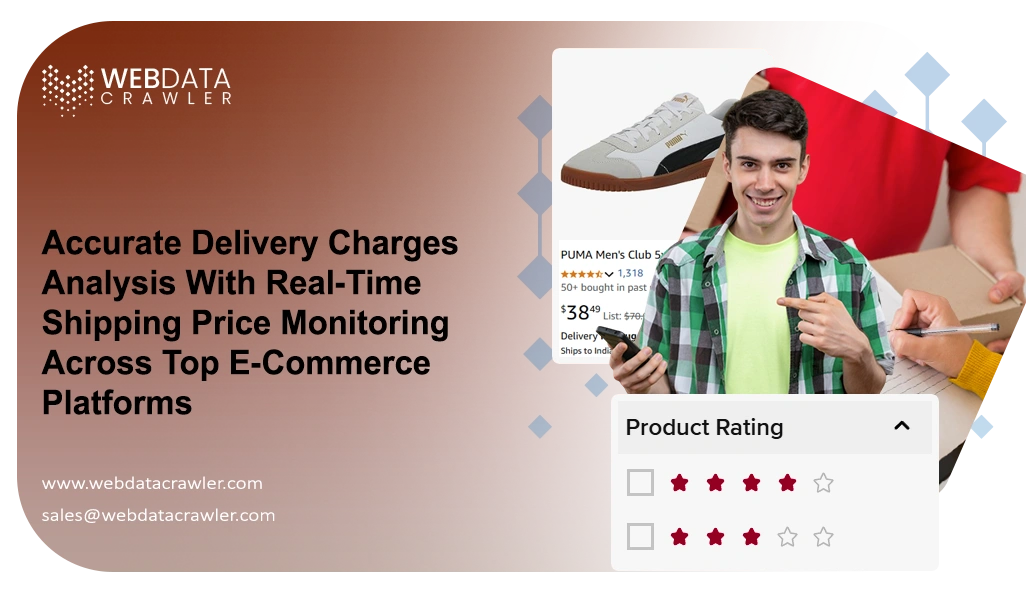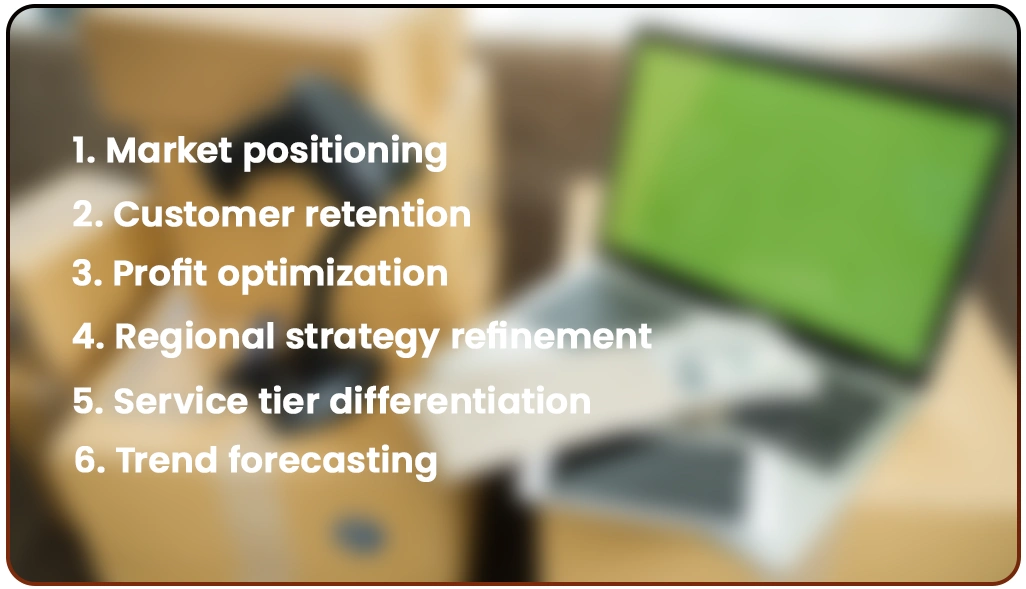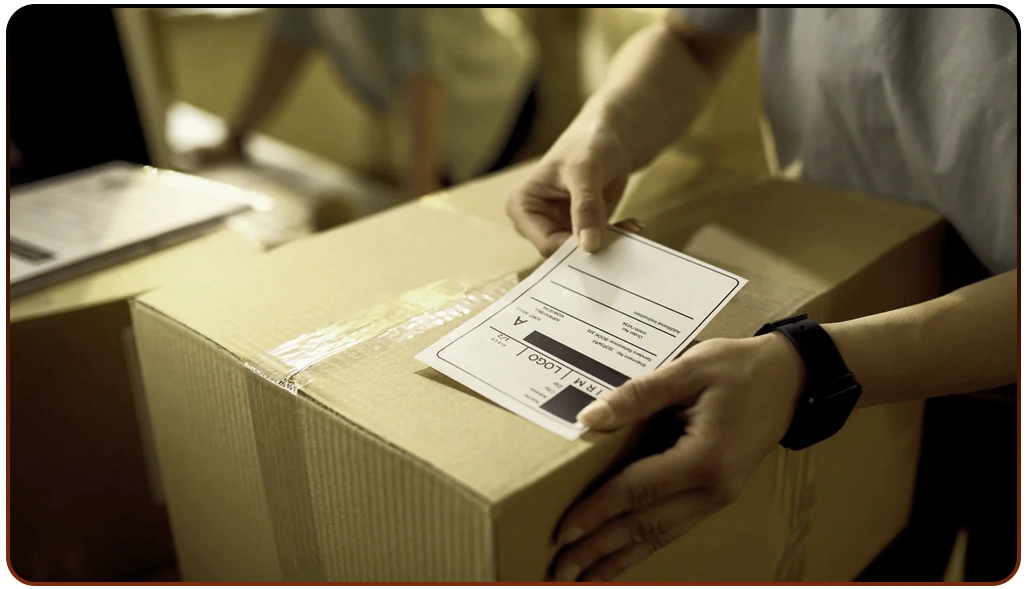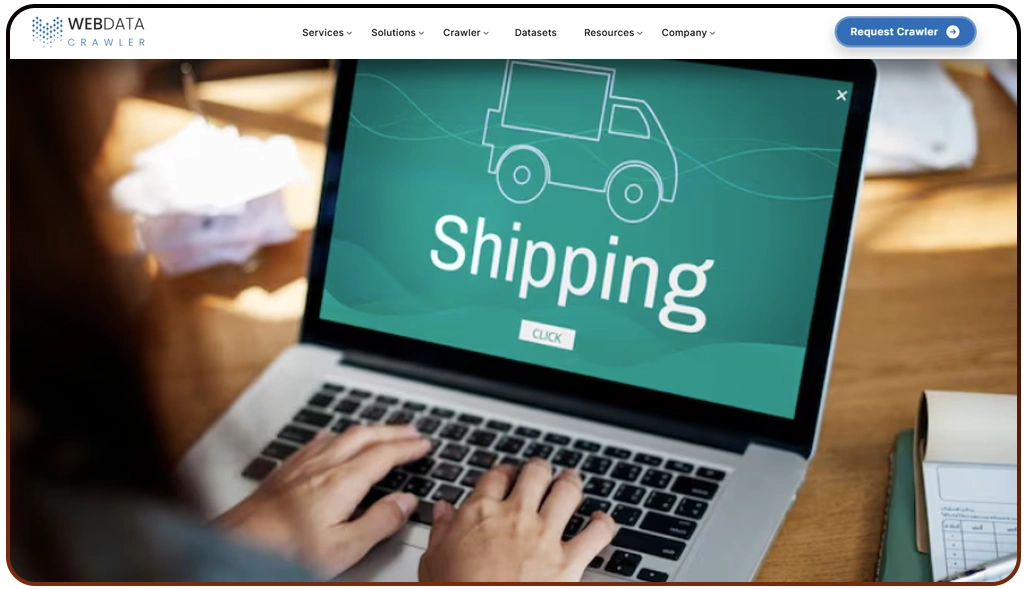Accurate Delivery Charges Analysis With Real-Time Shipping Price Monitoring Across Top E-Commerce Platforms
August 13

Introduction
Delivery costs have become a critical factor shaping e-commerce buying decisions. High shipping fees often lead to cart abandonment, while unpredictable courier rates challenge business margins. For online retailers and logistics managers, the need to Scrape Logistics Pricing Data and compare, track, and analyze delivery charges in real time is now a core requirement, driving both profitability and customer satisfaction.
In today’s interconnected e-commerce landscape, sellers face numerous marketplaces, a variety of courier partners, and constantly changing promotional shipping offers. Without accurate insight into delivery expenses, building precise pricing strategies or optimizing logistics costs becomes challenging. This is where Real-Time Shipping Price Monitoring proves indispensable—empowering brands to respond instantly to rate changes, enhance pricing decisions, and improve overall profitability.
Why Monitoring Delivery Charges Matters More Than Ever?

The rapid expansion of e-commerce has fueled intense competition among marketplaces, sellers, and courier service providers. With E-Commerce Logistics Data Scraping, businesses can track constantly changing shipping fee structures, helping them manage unpredictable costs more effectively.
Today’s environment demands that businesses adapt quickly, as even minor fluctuations in delivery pricing can significantly impact profit margins and customer satisfaction.
For example:
- Same product, different cost: A shipment from one city to another may cost almost double on one e-commerce platform compared to another, creating inconsistencies that can directly affect pricing strategies.
- Promotional pricing impact: Certain marketplaces choose to absorb delivery charges during promotional campaigns to attract buyers, while others pass the full cost to the customer, often influencing purchase decisions.
- Frequent courier rate changes: Courier companies regularly revise their base pricing and surcharge policies, causing sudden cost fluctuations that sellers must accommodate in their pricing models.
Through E-Commerce Delivery Charge Scraping, companies can capture precise, real-time data from multiple online platforms. This data reveals how competitors adjust their delivery fees when special shipping discounts are applied and which geographic zones or product categories carry higher logistical costs.
How Data Extraction Improves Pricing and Logistics Strategies?

In today’s fast-paced digital commerce environment, relying solely on raw figures is no longer enough. Businesses need a continuous flow of accurate, structured, and comparable delivery charge information to make strategic decisions. This is where Online Shipping Cost Comparison tools and well-organized datasets bring a competitive edge.
By using advanced technology to Scrape Shipping Rates From Websites, companies gain far more than just side-by-side rate comparisons. They can uncover critical patterns in delivery pricing, such as variations in surcharges for specific regions, changes in weight-based fees, or adjustments in express delivery charges. This deeper insight helps organizations align their pricing models with real-time market dynamics.
The extracted data can enhance strategies in the following ways:
- Market positioning: Using reliable pricing insights to maintain a competitive edge, ensuring your shipping charges align with customer expectations without sacrificing profitability.
- Customer retention: Offering the most appealing total purchase cost by optimizing both product pricing and shipping fees to encourage repeat purchases.
- Profit optimization: Identifying areas where cost savings can be passed on to customers or strategically adjusting prices to boost margins in favorable market conditions.
- Regional strategy refinement: Adjusting logistics pricing based on geographic trends, helping to address high-cost zones with targeted offers or alternative delivery options.
- Service tier differentiation: Structuring express, standard, and economy shipping tiers in a way that appeals to different customer segments while balancing operational costs.
- Trend forecasting: Anticipating market shifts by monitoring competitor price adjustments and seasonal changes in shipping costs.
Adopting a well-structured E-Commerce Logistics Cost Monitoring approach allows businesses to make proactive, data-backed decisions rather than reacting to sudden, unexpected cost changes. This not only strengthens operational efficiency but also helps sustain long-term profitability in a competitive e-commerce landscape.
Key Insights Enabled by Shipping Cost Intelligence

Gaining Shipping Rate Intelligence through access to live, accurate delivery charge datasets gives businesses an edge that manual tracking could never achieve. With the ability to Scrape Delivery Fees Across Platforms in real-time, sellers can monitor and compare changing fee structures, enabling timely adjustments that directly impact profitability and competitiveness.
One crucial application is Last-Mile Delivery Cost Analysis, the most costly and variable stage of the logistics process. By pinpointing the exact scenarios where last-mile costs escalate, companies can:
- Negotiate better courier contracts to secure more favorable terms.
- Redesign delivery commitments to strike an optimal balance between delivery speed and operational cost.
Equally important is working with Online Store Shipping Charges Data to understand competitive positioning.
Detailed analysis can reveal:
- Whether rivals integrate delivery costs into product pricing or display them separately?
- How does pricing presentation influence customer perception and purchasing decisions?
- Which listing or promotional strategies yield the best cost-to-conversion ratio?
By integrating these insights into business strategy, sellers can refine product listings, adjust marketing campaigns, and align pricing models with market realities — all while maintaining control over shipping-related expenses.
Scaling Price Tracking Across Multiple E-Commerce Platforms
In today’s competitive retail environment, monitoring prices within a single marketplace is no longer enough. A single platform may host thousands of sellers and offer multiple courier options, but real competition emerges when comparing performance across different platforms. This is where Cross-Platform Delivery Fee Tracking becomes a critical strategy for sellers aiming to maintain and improve price competitiveness.
By adopting a multi-platform tracking approach, businesses can gain a holistic understanding of delivery charges, courier performance, and cost variations, helping them identify hidden opportunities and mitigate pricing risks.
For example:
Identifying Platform-Based Price Gaps
A seller may notice that their express shipping option is 15% higher than the market average on one marketplace but remains below the average on another. This insight helps in refining pricing strategies for each platform individually.
Historical Trend Analysis
Shipping Cost Dataset Extraction allows sellers to access and analyze historical shipping data. This information can highlight past pricing trends and patterns, which can be used to forecast future delivery rates with better accuracy.
Seasonal and Market Trend Insights
Retailers can automate processes to Scrape Delivery Charge For Market Trends, enabling them to identify seasonal spikes in delivery fees. These insights make it easier to adjust promotions or offer discounts strategically.
Courier and Logistics Cost Evaluation
The ability to Scrape Courier And Logistics Pricing from multiple service providers ensures that decision-making includes both marketplace fees and direct courier service costs, giving sellers a complete cost overview.
Multi-Source Rate Comparison
By comparing delivery fees across various couriers and platforms, sellers can pinpoint the most cost-effective shipping methods without compromising service quality.
Data-Driven Pricing Optimization
Combining cross-platform delivery fee data with other operational metrics enables retailers to refine their pricing models, balance costs, and maintain competitive positioning in multiple markets.
How Web Data Crawler Can Help You?

We provide advanced solutions for Real-Time Shipping Price Monitoring, giving your business the precision it needs to make more innovative logistics and pricing decisions. Our tools track delivery charges across multiple platforms and courier services, ensuring you have reliable insights exactly when you need them.
Our key capabilities include:
- Multi-platform tracking for delivery charges from major marketplaces and couriers.
- Custom data extraction for specific zones, weights, and service types.
- Fee comparison across platforms for competitive positioning.
- Trend analysis to identify seasonal or regional cost changes.
- Scalable reporting for quick, informed decision-making.
- Historical data access for long-term logistics evaluation.
By partnering with us, you gain streamlined access to shipping fee data powered by E-Commerce Logistics Data Scraping, which helps you improve margins, optimize delivery strategies, and maintain competitive pricing across markets.
Conclusion
In an increasingly competitive market, mastering Real-Time Shipping Price Monitoring allows businesses to quickly respond to fluctuating courier rates and promotional changes, ensuring both profitability and customer satisfaction. This proactive approach transforms delivery charges from a cost challenge into a strategic advantage.
With the correct E-Commerce Delivery Charge Scraping solution, your team can make informed pricing decisions, reduce logistics overhead, and improve operational efficiency. Contact Web Data Crawler today to set up a tailored system that continuously delivers accurate, actionable insights for more innovative shipping cost management.